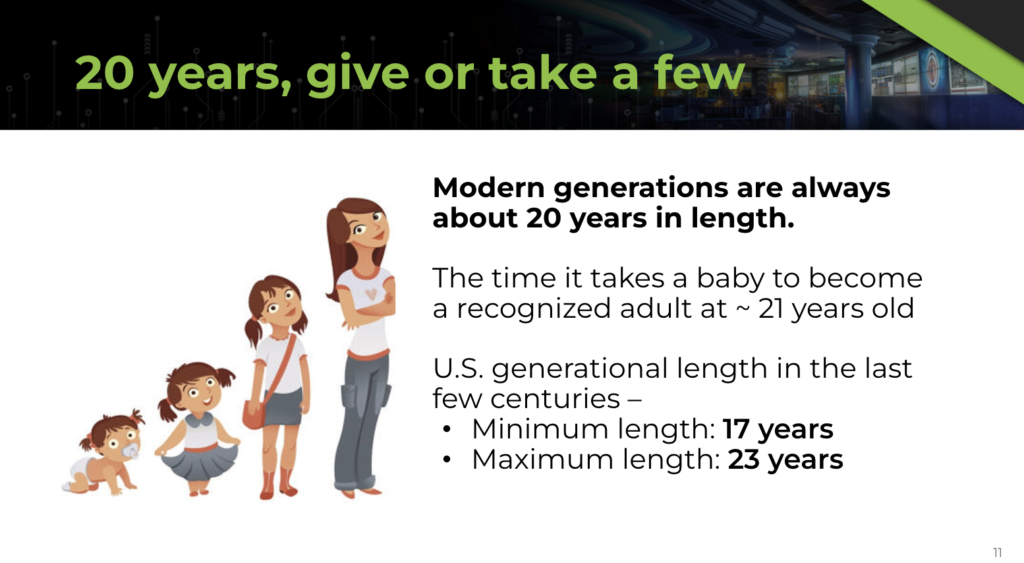You may not know this (but you do kind of know this): Generations are always about 20 years in length (17 at the low end, and 23 at the high end). There’s a reason — a very specific reason — why this is so, which is that it takes the first members born in a new generation about two decades to reach, nominally at least, young adulthood, which starts around age 21-22.
As the first members of a new generation (not known to be such when they are born, of course, but formed in childhood and crystallized as generation as they come of age and bridge from childhood into young adulthood) move into the next phase of life and, notably, begin to enter the professional workforce as the new young workers, everything shifts.
Things don’t shift culturally just because a new generation is in young adulthood, but also because the prior generation occupying the role of “young adults” starts to move — HAS to move — into midlife, and the associated social roles with that phase of life (power and management).
And the generation that was just in midlife needs to/has to start moving into elderhood, and its attendant age-based social role.
“The media” and the explosive phenomenon of white papers and surveys and various blog posts by people trying to make sense of the situation, are filled with sounds-nice-but-aren’t-backed-up-by-logic stories of #GenZ being the latest generation.
Gen Z is NOT a new generation. It’s a temporary and transitory phenomenon like Generation Jones … (hardly anyone remembers that one). It’ll fade in time.
Why? Because white papers and think tanks and the Pew Research Centers of the world don’t make or create generations. LIFE CONDITIONS do! Generations don’t line up and behave because some academic or MBA-toting person decided to draw a line, and the media echo-chambered that to death.
I’m telling you, I’m telling you, I’m telling you: the next generation — the next DISTINCTLY different U.S. generation after Millennials — is born 2005 and after. They are 18 at the top end in 2023, will be entering the professional workforce in a handful of years; and while this generation’s mild-mannered, conformist, helpful nature may not be glaringly different to start, it will be different, distinctly different from the Mill-Zs above them.
By the early 2030s (when they’ve been in the workforce 7-10 years), there will be no question whatsoever that a different generation (one born three years before the Global Financial Crisis of 2008) is here!
Folks, beware the myths around generations. They serve no one, save the companies trying to market themselves as experts positioned to know this customer base.
Remember: Generations are always about 20 years in length. Any time you see generational dates that point to 14-15 years in length, you’re not looking at accurate data.

Leave A Comment